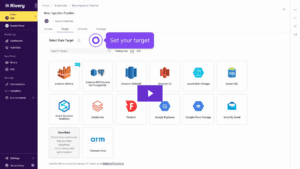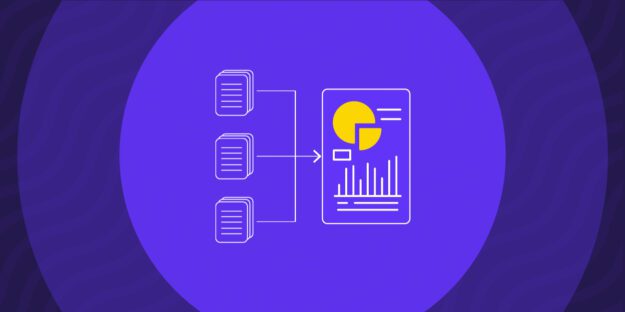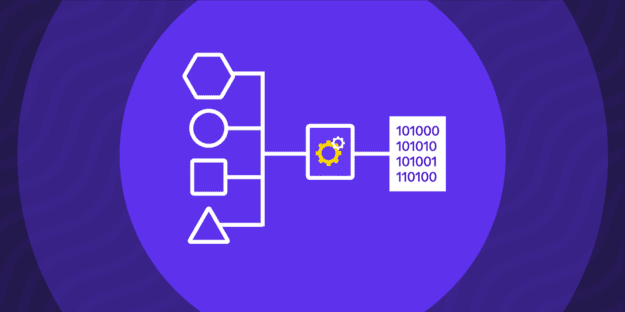Reverse ETL is a game-changer in data management, ensuring data synchronization across tools and applications used by businesses. By pushing clean and formatted data from data warehouses back into everyday operational systems, companies gain valuable insights into customer behavior and enhance data analysis capabilities.
Discover how the best reverse ETL tools can empower you to unlock your business data’s true potential. A reverse ETL tool streamlines data activation, enables real-time updates, and answers vital use cases that enable teams to be more data-driven, from marketing campaign personalization to predicting sales forecasts. If you want and need to make informed decisions and drive growth with actionable insights, keep on reading.
What is a Reverse ETL Tool?
A reverse ETL tool is a software solution that simplifies the process of extracting, transforming, and loading data from a data warehouse or data lake into various downstream applications and tools such as CRM systems, marketing automation platforms, and analytics dashboards.
This allows business teams and departments to directly apply transformed data or analytical results directly within their preferred operational tools.
Traditional ETL tools move data from source systems to a central repository. Reverse ETL goes one step beyond, sending data from the data warehouse (e.g. Snowflake), data lake (e.g. Databricks), or lakehouse (Amazon Redshift) back to different operational systems like HubSpot, Slack, and Tableau.
It feeds actionable data to the right hands so the right people can act on the right data at the right time.
In our predictable economy, where every team in every organization needs to be more data-driven and show results through data, reverse ETL is absolutely critical to delivering business value faster.
9 Best Reverse ETL Tools Of 2024
1. Rivery
Rivery is a top and extensive reverse ETL tool, letting you prepare data in your warehouse and push back insights into your operational systems in one workflow.
The easy-to-use, low-code, G2 award-winning reverse ETL tool is highly flexible. Rivery integrates with unlimited destinations using API empowering businesses to take full control of their warehouse data and the ability to act on that data to make important strategic decisions.

Key benefits Of Rivery
- Robust integration: Rivery integrates seamlessly with over 200 native connectors, any source via API. It easily integrates with major destinations like Snowflake, BigQuery, Azure, etc., allowing you to create end-to-end pipelines to your data warehouse, lake, and lakehouse.
- Granular control: with low-code and simple configuration, Rivery lets you easily take full control of all the data in your target destination – and make it operational.
- Single workflow data activation: in one step you can bring data to your chosen destination and push it back to your operational system
- Scalable infrastructure to address big-scale data volumes and expanded processing needs
- Ready to go reverse ETL: A range of ready-made kits for Salesforce, HubSpot, Slack and Tableau so you can put your cloud data warehouse to operational use in a few simple clicks.
- Diverse data transformation abilities, enabling data enrichment, cleansing, and mapping
- Automation and scheduling functions for well-timed data syncing and transformation tasks
- Emphasis on data safety and compliance with enterprise practices and standards
- Enterprise-grade security: abiding to the highest security and privacy standards, reverse ETL/data activation ensures data is compliant from source to destination and back.
- Award-winning support: Rivery offers extensive tech support to help you streamline your data flow and analysis
2. Dataddo
In terms of destination integrations, Dataddo is a relatively new kid on the reverse ETL tool block, offering around five options targeted at CRMs and finance management systems. The platform continuously provides new integrations.
Compared to Rivery, there are slight downsides to Dataddo. Rivery provides a complete SaaS ELT platform, whereas Dataddohas limited integrations. Rivery boasts a much broader selection of destination integrations, with numerous tools and applications, which is the most important part for businesses.
3. Hightouch
Hightouch is a reverse ETL tool company that syncs data from data warehouses to various structures like CRM, marketing automation, and customer support tools. This tool is an excellent option thanks to its ability to connect with more than 15 data resources, which presents a wide variety of data integration options.
Comparing Hightouch to Rivery, each system excels in connecting data sources and destinations. While Hightouch demonstrates promise with its considerable connectivity and security, Rivery offers unlimited destinations and targets, and that’s a clear advantage. With its API, syncing warehouse, lake, and lakehouse data back to any app is possible and this flexibility makes it an unrivaled reverse ETL tool.
4. Census Data Activation
As a reverse ETL tool, Census offers over 85 integrations with major data warehouses and sources. Its resilience handles high data volumes, automates data syncing between various sources, and provides a single source of truth.
That being said, Rivery outshines Census in the reverse ETL area with its comprehensive features, user-friendly interface, sturdy integrations, scalability, and effective data transformation capabilities. Its mature and mounted presence, customer support, and data safety make it the favored desire for corporations seeking efficient and powerful data activation solutions.
5. Hevo
Hevo is a significant competitor in the reverse ETL space, providing data activation solutions for businesses. As a cloud-based data integration platform, Hevo focuses on simplifying data transfer from data warehouses to various downstream applications, such as CRM systems and marketing automation tools.
Hevo offers a range of features to streamline data activation, including seamless integrations with various data sources and destinations. Its scalable infrastructure ensures efficient performance, even with large data volumes. Hevo provides data transformation capabilities to enrich, clean, and map data, allowing users to achieve the desired data preparation.
Compared to Rivery, Hevo shares some similarities, such as seamless data syncing from data warehouses to various applications. Plus, both platforms offer scalability, data transformation, and support for numerous integrations.
Hevo’s biggest advantage is its easy-to-use reverse ETL functionality, and Rivery’s biggest advantage is its ability to sync destination data to any app or database and make it operational, with complete control, thanks to its API.
6. Segment
Segment is another sizable competitor in the reverse ETL realm, providing data activation where needed . As a customer data platform (CDP), Segment specializes in amassing, managing, and syncing customer data to numerous downstream applications.
This tool provides many capabilities to streamline data activation, including data collection from more than one asset and real-time data syncing to numerous locations. Its CDP abilities enable companies to unify customer data and use it for customized advertising and analytics.
Segment’s focus is on customer data management and activation, which may additionally restrict some advanced data transformation and processing functionalities. Compared to Rivery, Segment excels in real-time data syncing and purchaser data unification through its CDP talents. However, Rivery is still considered the better one with overall better user satisfaction.
7. Rudderstack
RudderStack is a powerful reverse ETL platform designed to streamline data integration and synchronization across disparate systems. It unifies data sources, transforms raw data into actionable insights, and delivers personalized experiences to customers.
RudderStack has many features to support reverse ETL workflows—including seamless integration with popular data warehouses, CRMs, and marketing automation tools. It also provides a visual data pipeline builder, which creates complex data workflows without writing code.
One of the standout features of RudderStack is its open-source architecture, providing you with flexibility and control over data pipelines. Also, its intuitive interface and drag-and-drop functionality make it easy for you to design and deploy data workflows quickly.
However, while RudderStack’s open-source nature presents significant advantages like flexibility and customization—it may require additional resources and technical expertise to deploy and maintain effectively. Compared to Rivery, Rudderstack’s ETL pipelines when pulling from long-tail businesses are limited. Rivery also offers support for different levels of its plans, whereas Ruudderstack offers support on premium packages.
8. Polytomic
Polytomic is a cutting-edge reverse ETL platform with real-time data synchronization capabilities. It helps organizations orchestrate complex data workflows, transform raw data into actionable insights, and drive informed decision-making across the business.
Polytomic offers a wide range of features to support reverse ETL processes—including seamless integration with popular data sources and destinations such as Amazon S3, Google Cloud Storage, and Microsoft Azure. Similarly, Polytomic offers advanced data transformation and enrichment capabilities that enable users to cleanse, normalize, and augment data.
One of the key strengths of Polytomic is its real-time data synchronization capabilities, which enable businesses to react promptly to changing market conditions and customer behaviors.
Polytomic supports integration with a wide range of data sources and destinations, you may encounter limitations with specific proprietary systems or niche platforms. Polytomic also isn’t as established as tools like Rivery.
9. Workato
Workato is a comprehensive reverse ETL platform designed to automate data integration and synchronization across applications and systems. It empowers you to streamline their data workflows, improve operational efficiency, and drive better business outcomes.
Workato offers an extensive set of features to support reverse ETL processes, including seamless integration with over 300 business applications and databases. It also provides a visual interface for designing and deploying data workflows, allowing you to create complex integrations without writing code.
One of the standout features of Workato is its extensive library of pre-built connectors and templates, which accelerate the integration process and reduce time-to-value for users. Its intuitive interface and drag-and-drop functionality make it accessible to both technical and non-technical users,
Furthermore, while Workato supports integration with many data sources and destinations, you may need to invest additional time and resources in configuring and maintaining complex integrations. Rivery, on the other hand, is far more straightforward to use and handles complex integrations effortlessly.
What to Consider When Choosing a Reverse ETL Tool:
When deciding on reverse ETL tools, there are 7 crucial elements need to be carefully evaluated and compared to find the right fit for your data integration needs. Below, we elaborate on each element so you can select the best reverse ETL tool for your needs:
- Data Source and Destination Integrations – Look for a tool that integrates with a wide variety of data sources and destinations relevant to your business and use cases. This will help make the data syncing to the operational systems much more efficient and cost-effective.
- Scalability and Performance – Consider the tool’s potential to handle high data volumes and perform nicely under accelerated data processing demands.
- Ease of Use and User Interface – A consumer-friendly interface is essential because it streamlines adoption and reduces the learning time for both technical and non-technical users.
- Transformation Capabilities – Assess the data transformation functionalities of the reverse ETL tool. Ensure it facilitates the vital data enrichment, cleaning, and mapping operations to maximize on delivering faster time to insights and better business value.
- Automation and Scheduling Options – An efficient reverse ETL tool should provide automation functions, allowing automated data syncing and transformation on a predefined timetable. This guarantees data stays up to date without any intervention.
- Data Security and Compliance – Prioritize security and compliance measures. Ensure the tool adheres to the highest industry standards like HIPPA, GPDR, SOC II and ISO27001 to ensure the highest data quality.
- Support and Documentation – Look for organizations with excellent customer service, including documentation, tutorials, and beneficial resources. A responsive assistance crew can help with troubleshooting and resolving problems in a brief duration.
Conclusion
The role reverse ETL tools play in data integration in today’s fast and furious data economy cannot be ignored. They enable seamless data transfer from data warehouses to downstream applications. When choosing a reverse ETL tool, prioritize the tool’s integrations, scalability, ease of use, transformation abilities, automation options, data security, and support.
Rivery’s reverse ETL has a well-established presence and is the perfect choice for businesses seeking end-to-end ELT data pipelines and data activation solutions.
Join the ranks of high-performing data teams who trust Rivery.
Start your free trial today and discover why Rivery is recognized as one of the leading reverse ETL tools in 2024.
Minimize the firefighting. Maximize ROI on pipelines.





